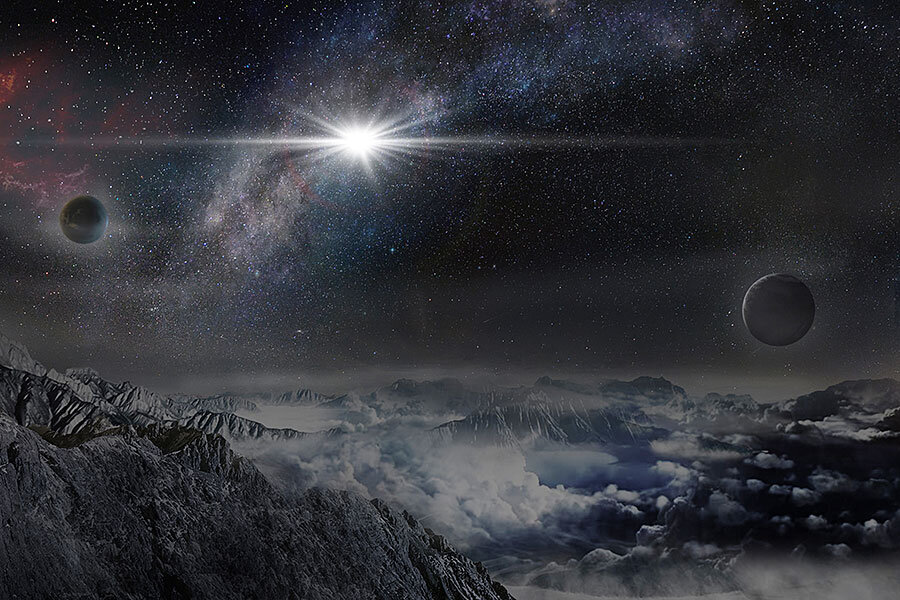Are supernovae impacting Earth? Cosmic rays might offer clues.
Loading...
The specks of radioactive dust spewed from spectacular explosions of massive, dying stars, or supernovae, are settling on Earth right now, say astrophysicists from Washington University in St. Louis. Though in extremely minuscule amounts, detectable only by the Cosmic Ray Isotope Spectrometer aboard a NASA observatory in space.
The instrument senses and analyzes the particles in cosmic rays, which are not rays at all, but rather charged particles that have been accelerated by supernovae explosions to travel nearly at the same speed as light. Unlike light that travels in a straight line, the trajectory of these particles is bent by magnetic fields into unpredictable paths across the universe, so it's hard to tell where they come from.
But researchers have figured it out by analyzing 17 years of cosmic-ray data collected by the spectrometer. In it, astronomers found 15 atomic nuclei of a rare radioactive form of iron known as 60Fe, or iron-60, which is produced during a supernova. Though only a few of these radioactive isotopes were found, they will help astronomers answer important questions about where and when supernovae have occurred, and ultimately, whether they have influenced the Earth's climate and major extinctions here.
"The fact that we see any iron-60 means that it came from a supernova not more than a few millions years ago," Martin Israel, a physics professor at Washington University, and co-author of a paper that was published Thursday in the journal Science, tells The Christian Science Monitor.
Researchers know where the isotopes came from because iron-60 is not produced on Earth; only in dying stars. And because it's radioactive, scientists can date it, given that they know the rate at which it decays over time. Half of iron-60's original quantity decays every 2.6 million years in what's called its "half-life." Because the spectrometer is catching the radioactive isotopes, even if only a few, means they must have come from a recent – in the context of the age of our solar system – supernova from a nearby neighborhood of our galaxy.
"The fact that they have a short lifetime means that they could not have diffused very far," another author on Thursday's paper, W. Robert Binns, a cosmic ray researcher at Washington University, tells the Monitor.
Given the time and origin of the supernovae that has been detected, our ancient human relatives, the Homo erectus, would have been around to observe the spectacular light show, which would have been as bright as the moon and could have lasted for weeks.
Thursday's findings come at the end of a string of other, independent findings on iron-60 recently that all – coincidentally – support the conclusion that supernovae happened close to our solar system a few millions years ago.
Earlier this month, one research team reported finding tiny deposits of iron-60 isotopes in the sediments of all the major oceans on Earth, and traced their source to star explosions that happened about 325 light years from our planet. Another team estimated the explosion times of these supernovae, identifying two events: one from 1.7 to 3.2 million years ago, and the other from 6.5 to 8.7 million years ago.
Now scientists want to know what their impact might have been on Earth. The two periods of time that show higher levels of the radioactive isotopes coincide with a decline in the Earth's temperature, for instance.
"Our local research group is working on figuring out what the effects were likely to have been," Adrian Melott, an astrophysicist from the University of Kansas who was not involved with either of the studies, said in an announcement.
"We really don't know. The events weren't close enough to cause a big mass extinction or severe effects, but not so far away that we can ignore them either," Professor Melott said.
For about 50 years, astronomers have expected that supernovae have occurred close enough to Earth to affect the climate and possibly cause mass extinctions here. In the 1990s, they found that if a supernova was big enough and happened close enough to Earth, it could shoot small amounts of debris over our planet. This debris – in the form of iron-60 – was first found in the ocean's crust in the early 2000s. Now, there is a flood of other findings about iron-60.
"All of this together tells us that there have been nearby supernovae in our neighborhood of the galaxy within the last 2 million years," says Prof. Binn. "That doesn't sound like recent to most people, but when you think about the age of earth and the solar system, it’s recent."
Supernovae in our galaxy are thought to happen three times per century, though one has not been observed since 1604.
[Editor's note: This story has been updated to reflect that the research on cosmic rays came out of Washington University, not the University of Washington.]








